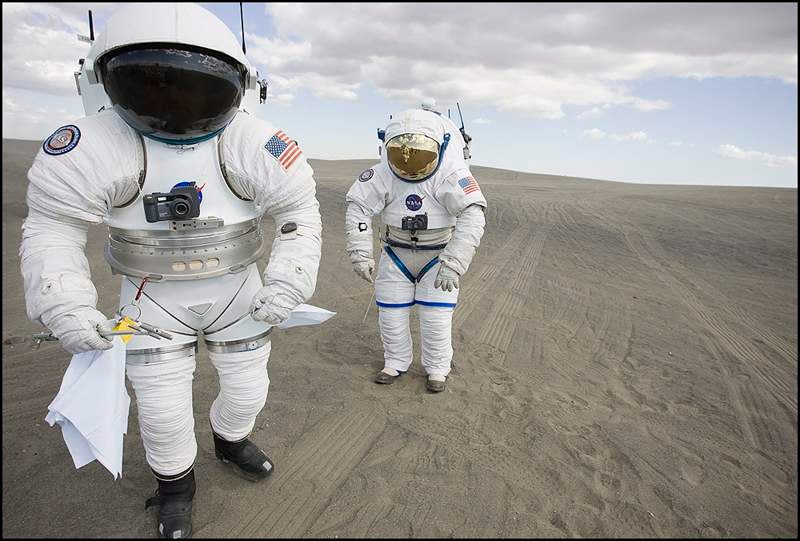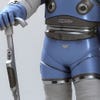New Spacesuit System
Oceaneering International Inc. of Houston has a contract with NASA to begin work on the design, development and production of a new spacesuit system for the Constellation Program. The system will protect astronauts during voyages to the International Space Station and exploration of the moon’s surface during missions taking place a decade from now.
Prototype Testing
Astronauts, engineers and scientists wore prototype spacesuits, drove prototype lunar rovers and simulated scientific work recently at Moses Lake, Washington as part of NASA’s demonstration of concepts for living and working on the lunar surface, looking ahead to missions to the moon slated for 2020.
Comprehensive Support Systems
The new spacesuit and support systems will protect against the launch and landing environments, and spacecraft cabin leaks. The system also offers allows astronauts to conduct contingency spacewalks. For short trips to the moon, the suit design will support a week’s worth of moon walks. The system also must be designed to support multiple spacewalks during potential six-month lunar outpost expeditions. Suits and support systems will be needed for as many as four astronauts on moon voyages and as many as six space station travelers.
Two Suits in One
The Constellation Space Suit System, or CSSS, is the first new suit since the shuttle “jet pack” of the 1970s. It will come in two configurations: one that the astronauts will wear inside the spaceship during launch, landing and any spacewalks needed for emergency repairs en route to the moon; and a second configuration designed to be worn on the moon’s surface. The two suits will share many components—such as boots, legs, gloves, and cooling and communication systems.
The Transition
While preparing to walk on the moon, the astronauts will construct Configuration Two (shown here, on the left, in a concept prototype drawing) by replacing elements of Configuration One (right) with elements specialized for surface operations.
The New Suit: Helmets
The helmets in the new suits will be padded for rough landings, and equipped with a microphone to allow for wireless communication with crew and ground control.
Outer Layer
The new suit’s outer layer will insulate against temperatures of 250 degrees Fahrenheit above or below zero, and protect against micrometeoroids.
Joints
Reinforced carbon fiber will lock out debris and dust.








